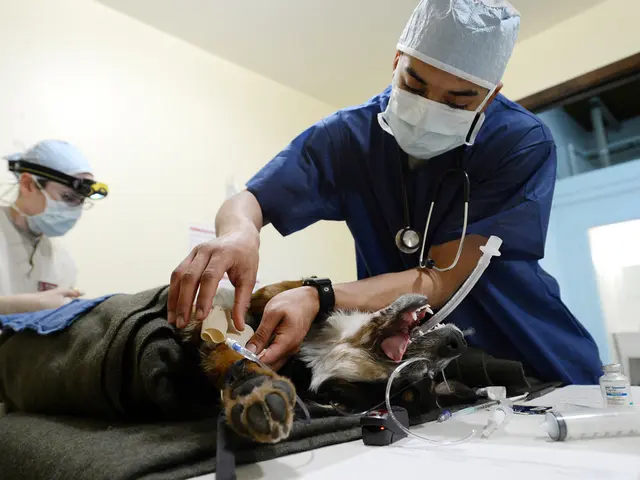Duration of Safety for Scrambled Eggs Left Out – Detailed Explanation
Scrambled eggs are a popular breakfast dish, but they can also pose a food safety risk if not handled correctly. Here are some essential guidelines to ensure your scrambled eggs are safe to eat.
First and foremost, cook scrambled eggs thoroughly, reaching an internal temperature of at least 160°F (71°C). This ensures that any initial bacteria are killed off [1][2]. However, it's not just cooking that matters. Once cooked, do not leave scrambled eggs at room temperature for longer than 2 hours [1][5]. In warmer temperatures (above 90°F / 32°C), reduce this time to 1 hour. Leaving scrambled eggs out for extended periods can allow pathogens like Salmonella to multiply to dangerous levels [1][2].
To store leftovers, cool them quickly by refrigerating them in shallow containers. Keep them refrigerated at or below 40°F (4°C) [5]. Reheating scrambled eggs can kill most bacteria, but not heat-resistant toxins, so it's essential to prevent bacterial growth in the first place [3].
At buffets or catered events, maintaining safe temperatures for scrambled eggs is crucial. Even with warming equipment, scrambled eggs should not be held for more than two hours. After two hours, the risk of bacterial growth increases, even at warm temperatures [4].
The United States Department of Agriculture (USDA) recommends that perishable foods, including scrambled eggs, should not be left at room temperature for more than two hours [4]. In hot weather (above 90°F or 32°C), the two-hour rule is reduced to one hour [4].
Proper cooking, initial egg quality, ambient temperature, storage conditions, and cleanliness of utensils and surfaces all affect the safety of scrambled eggs. In specific scenarios, such as breakfast on the go, outdoor picnics, or a late-night snack, discard scrambled eggs if they have been left out for longer than the recommended time [1][5].
To ensure food safety, always use clean serving utensils, regularly replenish food in small batches, and store raw eggs in the refrigerator at a consistent temperature. Use a food thermometer to ensure eggs are cooked to the proper internal temperature, and store refrigerated leftovers promptly, reheating them to 165°F (74°C), and use caution when freezing scrambled eggs [3].
Bacteria like Salmonella, Staphylococcus aureus, and Bacillus cereus can grow in cooked eggs left at room temperature, potentially causing foodborne illnesses. However, it's important to note that bacteria can multiply to unsafe levels without affecting the appearance, smell, or taste of food [2]. Therefore, it's crucial to follow the two-hour rule.
Spoiled scrambled eggs may have an unpleasant odor, changes in color or texture, or an off taste. Always wash your hands thoroughly before and after handling eggs, clean and sanitize all surfaces and utensils that come into contact with eggs, and avoid eating raw or undercooked eggs [3].
By following these guidelines, you can enjoy your scrambled eggs safely and reduce the risk of foodborne illnesses.
Maintaining the health-and-wellness aspect, it's crucial to follow the two-hour rule when leaving scrambled eggs at room temperature. Beyond this, bacteria like Salmonella can multiply to dangerous levels. Additionally, science plays a part in ensuring safe meals; proper cooking and refrigeration are essential to kill off initial bacteria and prevent bacterial growth in scrambled eggs.




